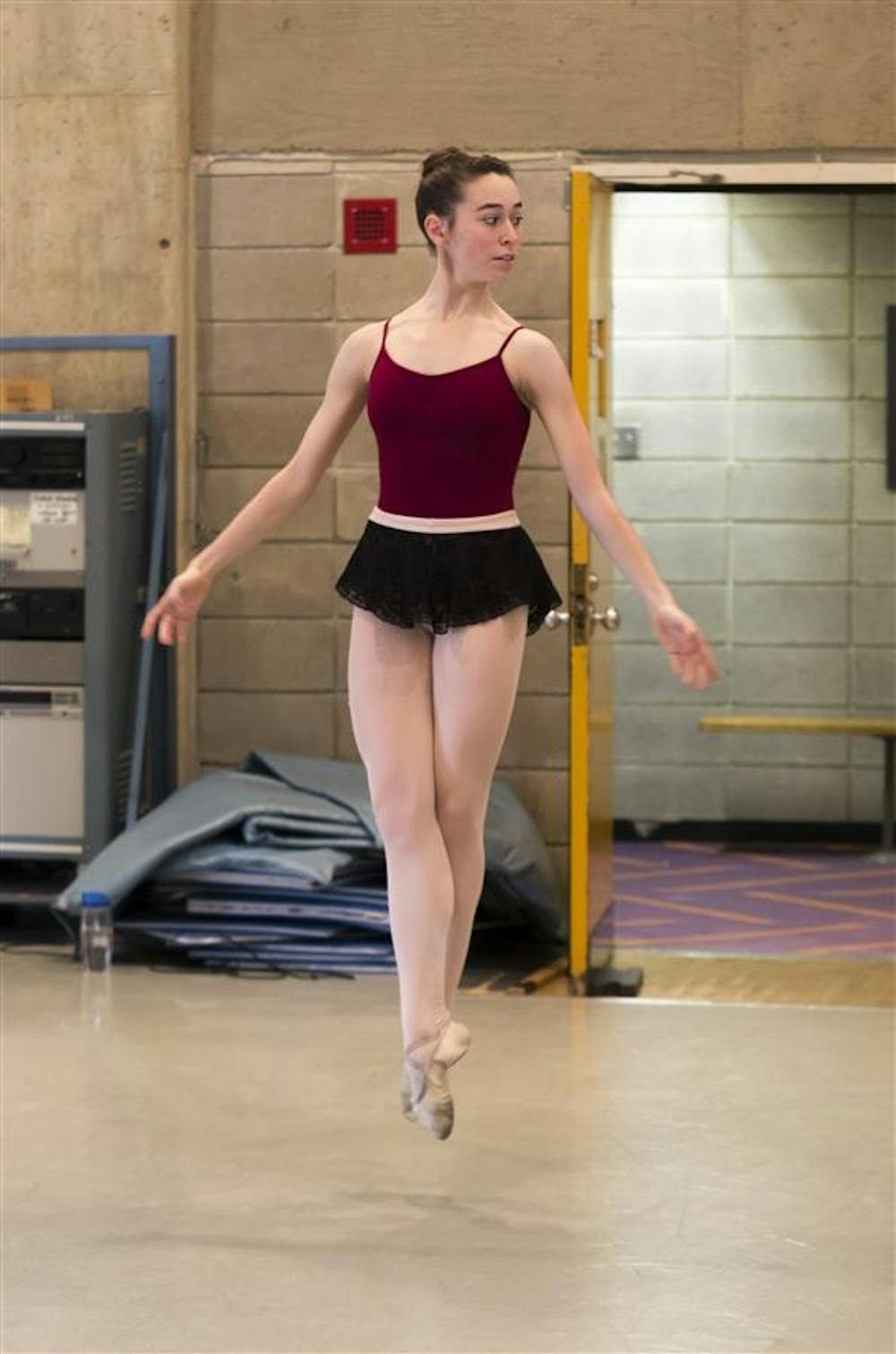Freshman Grace Koury spun in her romantic white tutu as artificial snowflakes fell from above.
“The Nutcracker” was Koury’s first production as a ballet dancer in the Jacobs School of Music and her first time dancing in front of 1,460 people in the sold-out Musical Arts Center auditorium.
As she took her final bow on stage, she envisioned herself as a professional ballerina finishing her company’s annual “Nutcracker” production.
She reflected on her decision to come to IU and pursue an undergraduate degree in ballet, a choice that is difficult for any aspiring ballerina to make.
After being accepted into the Jacobs School during her senior year of high school, Koury was given an offer to dance professionally for the Los Angeles Ballet.
“It was really hard to choose this over a traineeship, because the window gap is very small for getting a job opportunity,” Koury said. “There’s always girls younger than you coming up. Since careers can be short, the earlier you start, the longer your career
will be.”
In the world of ballet, it is common for companies to begin hiring dancers at the age of 17 or 18, ballet department Chair Michael Vernon said.
Dancers who start working for a company at a young age are often promoted sooner to soloist positions, he said.
“Young people are very impatient,” Vernon said. “They just want to get on stage and dance.”
Koury said when she first started the school year, she began to have second thoughts about her decision.
“For me it was because of the unknown,” she said. “It’s kind of hard being here, because people my age are dancing professionally now. It’s just kind of a time-game you have to think about.”
Vernon said it is common for ballet students to leave the program after receiving a job offer at a company.
“It happens about three or four times a year,” Vernon said. “We lost a freshman and a junior last year.”
Koury said as she began rehearsals for “The Nutcracker” and her days became even more consumed by dance, her second thoughts became less painful. She said the
production made her appreciate the professional nature of the ballet department.
“It wasn’t like a school production,” Koury said. “It was like a company production. Getting to see all the upperclassmen and how incredibly talented they are, I realized I could strive for that,” she said.
Vernon said the Jacobs School offers students an experience that is very similar to that of a major professional company.
Most of the faculty have experience dancing in the professional field, and Vernon often uses his connections with companies to help his students find jobs after graduating, he said.
“Students have a chance to dance lead roles well before they would in a ballet company,” Vernon said.
There are currently 52 dancers in the ballet program, and the department enrolls anywhere from 15 to 20 freshmen each year.
About one out of every eight dancers who auditions is accepted into the program, Vernon said.
Freshman Alex Hartnett deferred her enrollment to IU for a year so she could dance with the professional company Ballet Arizona immediately after graduating from high school.
“It was bittersweet,” she said. “I really wanted to go out and dance, but I had already fallen in love with IU.”
Hartnett said she decided to accept the offer to gain experience and an understanding of the professional work environment.
“It was not only what was expected, but it was what I wanted to do,” Hartnett said. “Being a professional ballerina dancer has been my dream for so long.”
Hartnett said the training and rehearsal schedule at Ballet Arizona was very comparable to the workload in the Ballet Department at IU.
At Ballet Arizona, she had classes and rehearsals every weekday from 10 a.m. to 4:30 p.m. As a freshman ballet major at IU, she dances from 11:30 a.m. to 5:45 p.m. Monday through Friday.
Hartnett said it is common for many ballet majors to graduate in three years to begin working as soon as possible.
Due to the short length of a ballet dancer’s career, an undergraduate degree is extremely important for aspiring ballerinas, Vernon said.
Ballerinas often retire in their mid-30s, depending on the person’s physical health.
“There’s definite drawbacks to starting young,” Vernon said. “When you do retire or if you get injured, you won’t have an education to fall back on. The years (in college) are far better spent when you’re 18 than when you’re 40.”
Hartnett said the program requires students to take classes in a field of study outside ballet.
She recently decided to pursue informatics as her outside concentration.
“Being here and getting my degree is going to be so useful,” Hartnett said. “It’s so great that they let you explore those interests while still focusing on your
ultimate goal.”
Window of opportunity
Aspiring ballerinas face decision of signing with a company or continuing their education after high school

Get stories like this in your inbox
Subscribe





